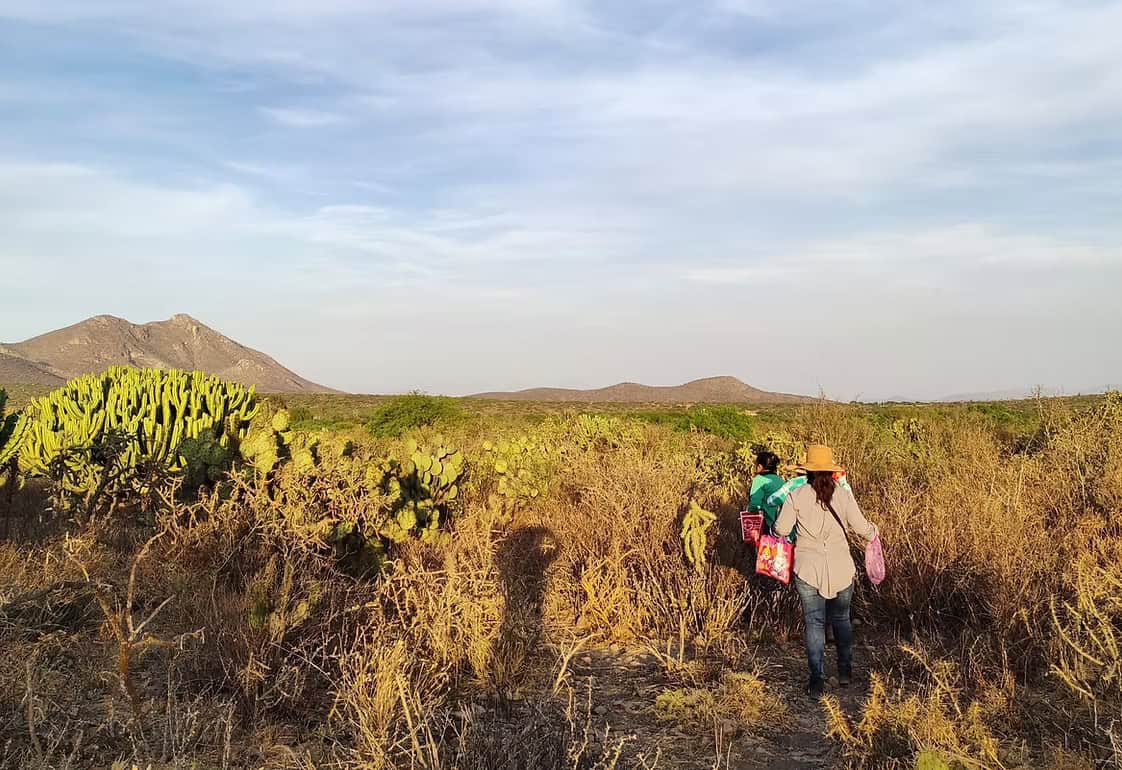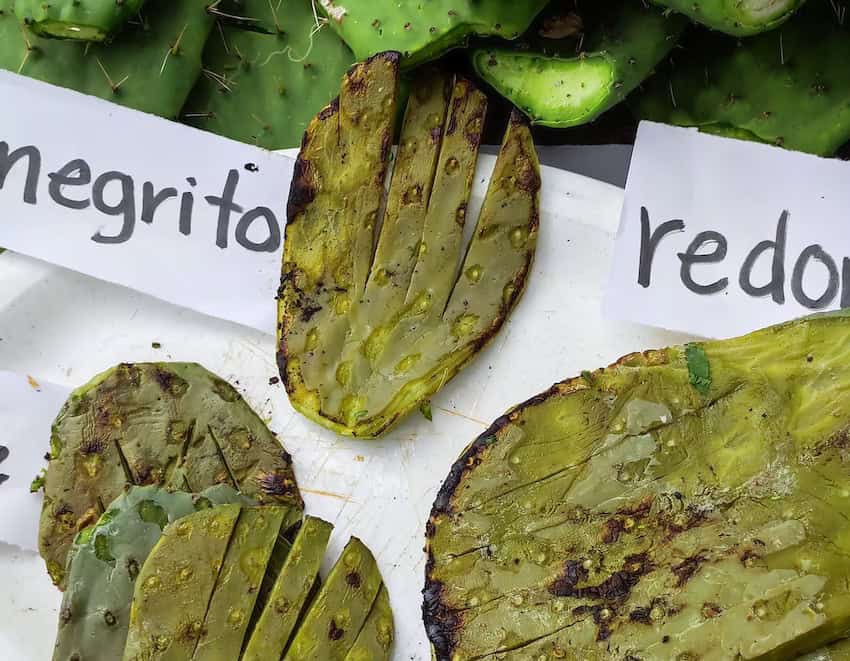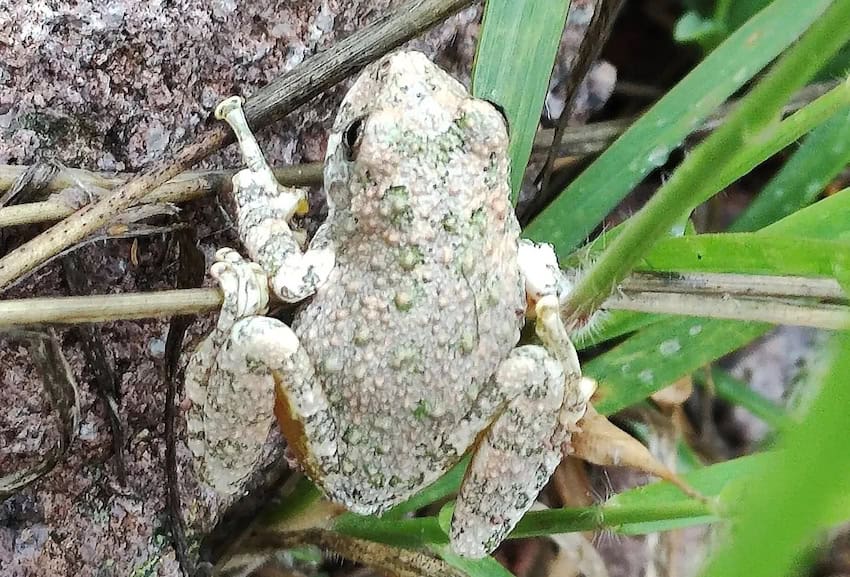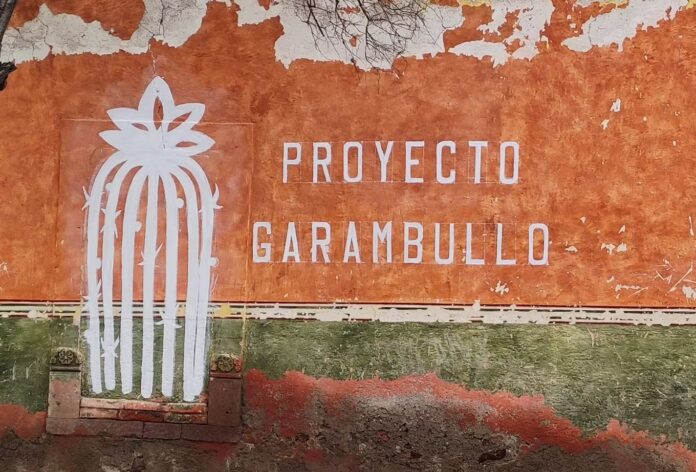Located in Colón, Querétaro, Proyecto Garambullo, Laboratorio de Arte y Cultura del Semidesierto, is a one of a kind institution that unites art, culture, and gastronomy to preserve the natural and cultural heritage of Querétaro’s semidesert region.
Led by Mariana Morales Cortés, the project fosters knowledge through collaboration between artists, local communities, and scientists, emphasizing sustainability and cultural roots. As Mariana puts it, “Garambullo is a platform for the exchange of knowledge. And, like any good Mexican home, the kitchen is the epicenter of the action.”

Art and community: Working hand in hand
Proyecto Garambullo’s work starts with the local communities of Colón. Before involving artists, workshops are held to learn from the ancestral knowledge of those who cultivate and gather wild products in the area. This knowledge forms the foundation for artistic residencies, where creators from various disciplines integrate into the environment and collaborate with the communities to produce work that honors the land’s roots and ancestors.
In partnership with Trámite, a bureau promoting art collecting and emerging artists in Mexico, Garambullo organizes residencies that allow artists to explore the semidesert’s biodiversity and life. These experiences result in art pieces reflecting the environment’s richness and invite contemplation on the relationship between art, nature, and culture.
In the latest Trámite edition, Paola Jasso curated the residency, presenting works by the artistic duo Celeste and artist Maximiliano Ruelas. Their pieces delved into themes of territory, community, and semi-desert life, offering a profound, reflective perspective on the region.

Gastronomy and culinary knowledge
Mariana explains, “I came to live in Colón, Querétaro, and I wanted to create something connected to nature and art. Over time, the idea grew, and now we are researching food culture. We’ve engaged with producers and gatherers to learn from these women about what they harvest and gather — wild vegetables and products. It’s a way of revisiting the past to recover from crises. By linking art with cooking and nature, we open pathways to better understand ourselves as a community and appreciate our environment.”
Cooking is a core pillar of the project. At “MADA” workshops, inspired by the Hñahñu word for a molcajete, local cooks share recipes highlighting wild ingredients and cornfield products. These workshops aim to “preserve culinary traditions and elevate the value of regional biodiversity.” Understanding what grows wild and is edible can be crucial during times of crisis.
Each month, Garambullo organizes gastronomic experiences that blend traditional dishes with community conversations and hikes through the semi-desert. These activities offer participants firsthand insight into the harvesting process and the region’s natural wealth.
The future of Querétaro’s semi-desert

Proyecto Garambullo’s mission to revalue local knowledge and preserve biodiversity positions it as a cultural and research hub in the region. Among its long-term goals — already underway — is creating a collective recipe book that celebrates the semidesert’s biodiversity and preserves traditions like garambullo harvesting, one of the area’s most iconic fruits.
An invitation to change
Spaces like Proyecto Garambullo reshape our understanding of the relationship between art, community, and the environment. Their work inspires a shift toward a more conscious, sustainable lifestyle, allowing artists to create works that can transform perspectives and worldviews.
Anyone can visit Proyecto Garambullo to explore its workshops, hikes, and gastronomic experiences and become part of this initiative celebrating art, cuisine, and the Querétaro semidesert’s rich heritage.
Camila Sánchez Bolaño is a journalist, feminist, bookseller, lecturer, and cultural promoter and is the former Editor in Chief of Newsweek en Español magazine.
